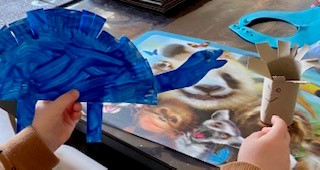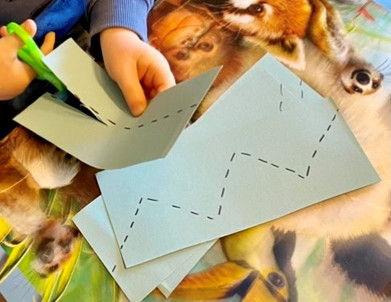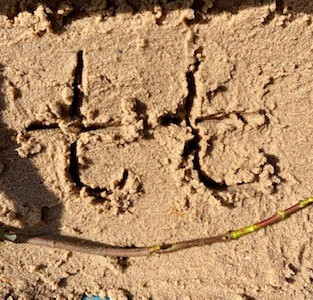D.I.Y Fine Motor Activities for Home Educators
- No Worksheets Allowed

- Jan 24, 2021
- 4 min read
Updated: Feb 24
Did you know that fine motor skills are important for children? Fine motor skills refer to the ability to make movements using the small muscles. They're needed for tons of activities in school; from writing, drawing and using scissors to turning the pages of a book, construction and using a computer mouse or keyboard!
In addition, fine motor skills are required for many self-care tasks. Examples include getting dressed (doing buttons, zips and laces), brushing teeth, opening a lunchbox and using cutlery to eat.
Well-developed fine motor skills enable children to become more independent. They can help children to complete a task quickly and efficiently. These skills are learnt and developed in stages as a child grows. You can click here for some resources which are designed to help with fine motor skills. *
Here are some tried and tested ways to work out these all-important small muscles:
Cutting
Learning to cut takes a lot of time and practice. Children need good hand-eye coordination and hand strength to be able to use scissors. They should be encouraged to keep their thumb up by doing a 'thumbs up' before starting. Start off with thicker materials first, such as straws and card, as these are easier to cut. Once your child has progressed past single snips, encourage them to turn the card, rather than the hand which they are cutting with and to follow simple patterns.
Pegs/Tweezers
Regular clothes pegs and jumbo tweezers are great for improving hand strength. They also help children to develop their hand-eye coordination. As your child's hand strength improves, they can try smaller tweezers.
Mark Making
Mark making is the step before writing. The skills learnt during mark-making contribute to your child's ability to hold and use a pencil, to draw and to colour. Mark making should be fun and multi-sensory. Use anything from damp sand to shaving foam, glitter to chalks to practise making lines, swirls, dots and other shapes, before progressing to letter formation.
Playdough
Playdough is fantastic for strengthening the fine motor muscles. Children should roll, flatten, pinch and use cutters. Using clay or thicker modelling materials will increase the difficulty and work the muscles harder!

Hole Punching
Hole punch activities are great for developing the smaller muscles in the hands, fingers and wrists. There are a variety of hole punchers out there, including double hole punchers, single hole punch pliers, mini punchers and even ones which punch out fun shapes!

Threading
A good pincer grip means that the thumb and pointer finger touch, just like when doing an 'OK' sign. Threading is an ideal way to improve the pincer grip. You could use a stopwatch or sand timer to challenge children to thread x number of objects in one minute. Your child could thread beads, buttons or pasta tubes onto string. Encourage them to pick up the objects using the thumb and index finger. Alternatively, children can thread a pipe cleaner through the holes in a colander!
Loose Parts
Loose parts or tinker trays are very popular at the moment. They are basically collections of 'loose parts', such as buttons, sequins, twigs and glass beads. In addition to encouraging creativity, they are also wonderful for developing fine motor skills. Picking up small items such sequins, beads, feathers and gems will help children to strengthen their pincer grip.
Flicking
Children can line up polystyrene balls and flick them into a net (a small tub will do). They should flick the balls with each finger and alternate hands. Can they flick the balls faster? Alternatives to balls include scrunched up pieces of paper or marbles (although you should think about safety and the age of the child when introducing small items).

Posting
In this activity, children post items through a slot, one at a time. They should be encouraged to use their thumb and one finger. There are a huge range of toys available which focus on this skill, or you can easily make your own! Just cut slots in cardboard boxes and decorate with pens and stickers! Your child can then post lolly pop sticks, pieces of card or counters through the holes.
Fine Motor Activities - What Next?
If you love the activities shown here, make sure that you check out these other hands-on learning ideas too:
This preschool activity book is wonderful for 3-4 year olds. It's jam-packed with fun age-appropriate activities, including those designed to develop fine motor skills! Click on the image to find out more.
Bingo dabbers are amazing fun for little (and big) kids! This activity book is the ideal way to develop fine motor skills, with as little mess as possible! It's like painting without the need to cover your dining table and clean up afterwards! Click on the image to take you to Amazon, where you can buy this activity book.
* As an Amazon associate, I earn from qualifying purchases.



































Comments